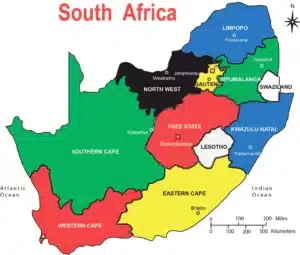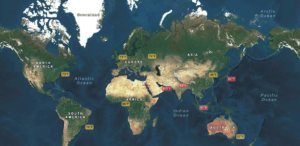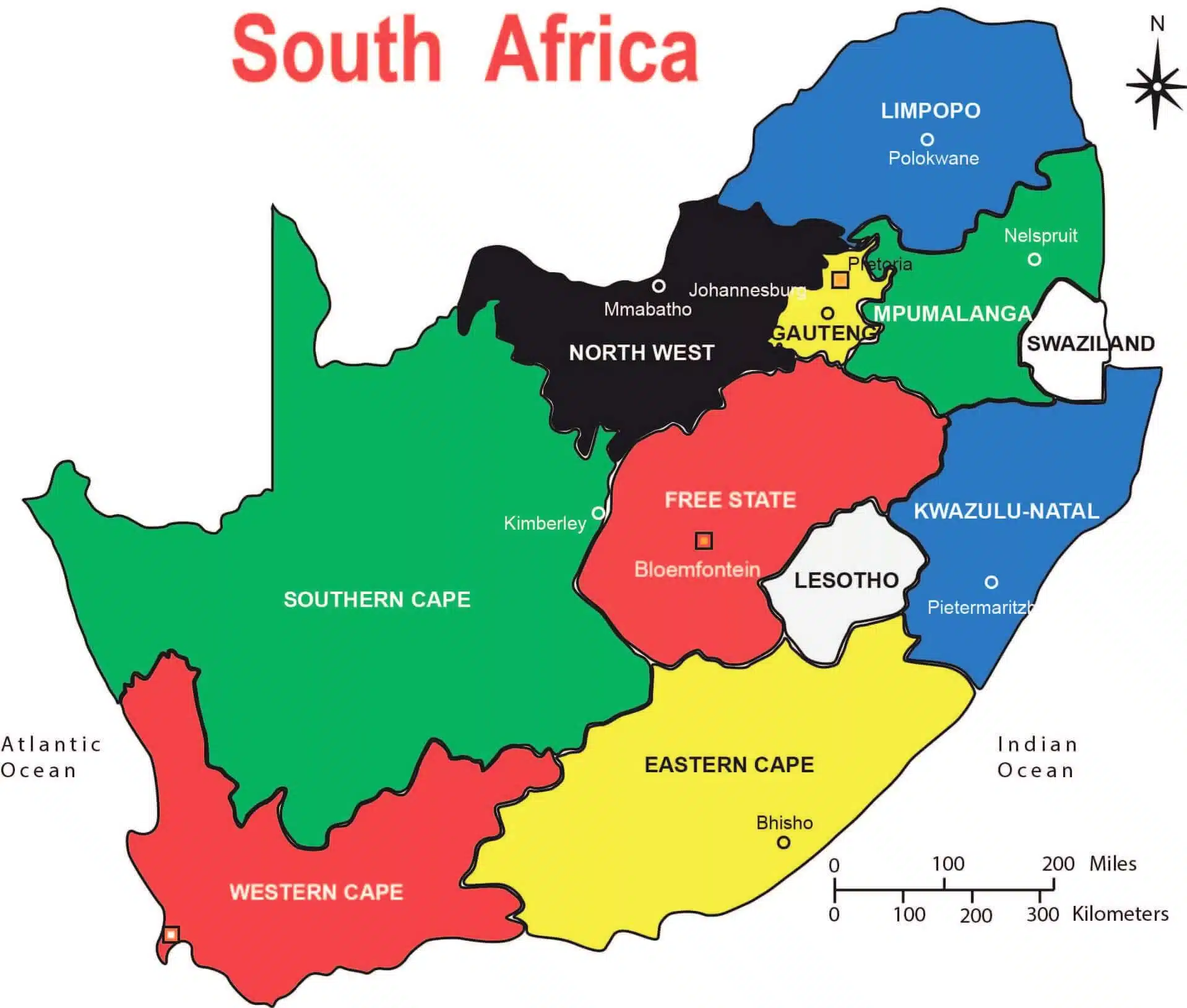Exploring Africa Through Africa map and satellite image:
Africa, the second-largest and second-most-populous continent on Earth, is a land of diverse cultures, breathtaking landscapes, and rich history. The power of modern technology has allowed us to explore this vast continent from a whole new perspective: through maps and satellite images. In this article, we’ll delve into the fascinating world of Africa’s maps and satellite imagery, uncovering hidden gems and shedding light on their importance in various aspects of our lives.
The Essence of Africa map and satellite image
A map is not just a visual representation; it’s a story waiting to be told. When you lay your eyes on an Africa map, you’re embarking on a journey across deserts, savannahs, mountains, and bustling cities. Every contour line and shaded area speaks of the land’s topography, while political boundaries highlight the divisions that have shaped the continent’s history.
From the Atlas Mountains of North Africa to the vibrant coastal regions of the West, each area has its unique charm. The Sahara Desert, stretching across the northern expanse, is starkly contrasted by the lush rainforests of Central Africa. The Nile River, Africa’s lifeline, weaves its way like a thread connecting ancient civilizations.
Unveiling Hidden Treasures from Above
Satellite imagery takes our exploration to new heights – quite literally. With satellites orbiting the Earth, we can capture images that offer a bird’s-eye view of Africa’s beauty and complexity. These images not only inspire awe but also serve practical purposes that affect our daily lives.
Imagine tracking wildlife migration patterns in the Serengeti, monitoring deforestation in the Congo Basin, or assessing water resources in the Sahel region. Satellite images enable us to study climate changes, and urban expansion, and even aid in disaster response. They provide invaluable data for scientific research, conservation efforts, and urban planning.

Beyond the Surface: Analyzing Data
The power of maps and satellite images extends beyond aesthetics. By combining these visual tools with data analysis, we gain insights that shape decisions and policies. Remote sensing technologies allow us to measure changes in land cover, detect changes in sea levels, and even predict weather patterns.
For instance, satellite imagery helps us assess the impact of climate change on Africa’s coastal regions. As sea levels rise, we can observe the encroachment of seawater into low-lying areas, posing threats to communities and ecosystems. Such insights drive the need for sustainable solutions and informed adaptation strategies.
Navigating the Future

As technology continues to advance, so does our ability to understand and appreciate Africa through maps and satellite images. These tools serve as bridges between cultures, connecting people across borders and time zones. They provide a shared perspective that transcends language barriers.
From a tourism standpoint, maps and satellite images offer a glimpse of Africa’s wonders, encouraging travelers to explore its diverse landscapes responsibly. By highlighting the beauty of conservation areas and cultural heritage sites, we can inspire a new generation of responsible adventurers.
Political Divisions: Mapping the Complexities in Africa map and satellite image
When we think about Africa, its diverse cultures, rich history, and breathtaking landscapes often come to mind. Yet, beneath this tapestry of uniqueness lies a web of political divisions that have evolved over centuries, shaping the continent’s present-day boundaries and dynamics. In this article, we’ll delve into the intricate world of Africa’s political divisions, exploring the factors that have influenced them and their impact on the continent’s identity.
Historical Underpinnings
Africa’s political map is a testament to a complex history of colonization, trade, and cultural interactions. During the “Scramble for Africa” in the late 19th century, European powers carved out territories without regard for pre-existing ethnic and cultural boundaries. These arbitrary divisions often led to tensions and conflicts that continue to reverberate today.
Nation-States and Borders in Africa map and satellite image
The legacy of colonialism left Africa with a patchwork of nation-states, each with its own borders and administrative structures. While some borders corresponded with natural geographical features, many others cut across ethnic groups and traditional territories. This often resulted in challenges related to governance, resource allocation, and identity.
Ethnic Diversity and Identity in Africa map and satellite image
One of the complexities of Africa’s political divisions lies in its vast ethnic diversity. The continent is home to thousands of ethnic groups, each with its own language, traditions, and historical connections. Political boundaries sometimes split these groups across different countries, raising questions about representation and cultural preservation.
Modern Realities: Challenges and Opportunities
In the post-colonial era, African nations grappled with the legacies of colonial borders and the task of building cohesive nations. Some countries have experienced internal conflicts fueled by ethnic tensions, while others have successfully navigated their diverse populations toward unity. Efforts to promote regional integration, like the African Union, aim to foster collaboration and development across national borders.
Border Disputes and Resources
Political divisions can also lead to disputes over resources, particularly when valuable minerals, oil, or water sources straddle multiple countries. These disputes can escalate into conflicts, impacting regional stability. However, they also present opportunities for diplomatic resolution and cooperative resource management.
The Role of Maps and Boundaries in Africa map and satellite image
Maps are not merely depictions of land; they are tools of power and identity. The drawing of borders on a map can shape national narratives and influence how people perceive their place in the world. Borders define citizenship, rights, and responsibilities, shaping the lives of millions.
Shaping the Future: Unity and Diversity
As Africa looks to the future, the challenge lies in balancing unity and diversity. Embracing the richness of cultural backgrounds while fostering a sense of collective identity is crucial for sustainable development and peaceful coexistence. Efforts to redraw borders or redefine political relationships must be undertaken with sensitivity and a long-term perspective.
The political divisions of Africa reveal a tapestry of complexity, reflecting historical legacies, ethnic diversity, and modern challenges. While these divisions have posed hurdles, they also provide opportunities for unity, collaboration, and growth. As we navigate the intricacies of Africa’s political map, let’s recognize the importance of understanding the past to forge a brighter future for the continent and its people.
This exploration of the political divisions in Africa provides insights into the complex interplay of history, identity, and governance. If you need further information or adjustments to the article, feel free to ask!
Conclusion
In the grand tapestry of our world, Africa stands as a vibrant and complex piece. Maps and satellite images bring this complexity to life, allowing us to appreciate the continent’s vastness, diversity, and challenges. Beyond their visual appeal, these tools empower us with the knowledge that drives positive change.
So, the next time you look at an African map or a satellite image, remember that you’re not just observing lines and pixels. You’re witnessing a narrative that spans centuries, cultures, and ecosystems. Let’s cherish these windows into Africa’s heart and work together to safeguard its future.
I hope this article captures the essence of “Africa Map and Satellite Image” in an engaging and informative way while maintaining a conversational tone. If you need any further assistance or adjustments, feel free to ask!
Ghana on a map: 10 Things you need to Know
Map of Ghana Accra with 10 Major Cities in Africa
Map of USA and Mexico 5 Format Free PDF/ESP/ai/SVG
